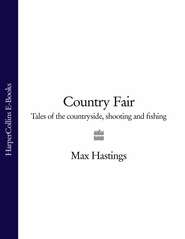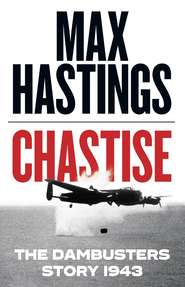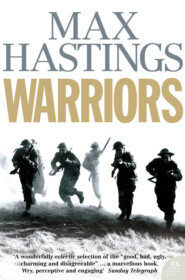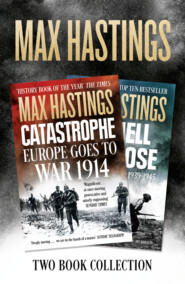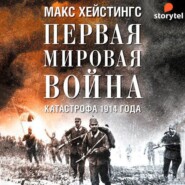По всем вопросам обращайтесь на: info@litportal.ru
(©) 2003-2024.
✖
Vietnam: An Epic History of a Divisive War 1945-1975
Настройки чтения
Размер шрифта
Высота строк
Поля
ICCS, International Commission for Control and Supervision, which had a wider membership to address an alleged 18,000 ceasefire violations, but proved equally ineffectual
JCS US Joint Chiefs of Staff
Kit Carson scouts NVA or VC defectors serving with US units
LAW shoulder-fired 66mm Light Anti-tank Weapon, used by US and South Vietnamese forces
LRRP long-range reconnaissance patrol
LZ landing zone for a helicopter assault – a ‘hot’ LZ was one defended by the enemy
M-14 US Army 7.62mm semi-automatic infantry rifle, standard until 1966–68, when progressively withdrawn
M-16 5.56mm rifle, a much lighter automatic weapon than the M-14 that it replaced, of which 1966–68 versions proved prone to jam in action
MACV Military Assistance Command Vietnam, US headquarters in Saigon – pronounced ‘Mac-V’
MEDCAP Medical Civil Action Program – deployment of military medical teams to provide care to the civil population
montagnards originally French term for Vietnamese hill tribes, often abbreviated by Americans to ‘Yards’, who were almost universally anti-communist and often recruited by special forces as irregulars
NLF National Liberation Front: the supposed political coalition – in reality entirely communist-run – movement, established in 1960 to promote and direct Southern resistance to the Saigon government
NSC National Security Council
NVA North Vietnamese Army, a contemporary American usage adopted below, in preference to the more common modern PAVN, People’s Army of Vietnam
platoon element of 30–40 men, normally four to each company, customarily commanded by a lieutenant, seconded by a sergeant
PRC-10, later replaced by PRC-25, US infantry voice radio set, weighing 23.5lb including battery. A company commander might be accompanied by up to three RTOs – operators – each carrying a set tuned to different nets
PRG Provisional Revolutionary Government-in-waiting created by the communists in June 1969 to supersede the NLF. It was initially located at COSVN, then from February 1973 at South Vietnam’s ‘provisional capital’ at Loc Ninh, north of Saigon
RoE Rules of Engagement, whereby US forces were permitted to attack communist forces and installations; entirely different in South and North Vietnam, Laos and Cambodia, and varied during the course of the war
recoilless rifle relatively portable Soviet-designed short-range artillery pieces ranging in calibre from 57mm to 106mm, that could penetrate armour at a range of 500 yards, or propel an explosive bomb up to 4,000 yards, mounted either on a tripod or a two-wheeled carriage; extensively used by the VC and NVA
regiment military unit normally composed of three battalions, commanded by a full colonel
RF, PF Regional Forces, Popular Forces – militias recruited by Saigon for local defence, lightly-armed and commanded by province chiefs, totalling 525,000 men and sometimes known as Ruff-Puffs
RPG rocket-propelled grenade-launcher, a superbly effective communist shoulder-fired weapon, delivering a rocket with a range of 150 yards, that could penetrate seven inches of armour
R&R rest and recuperation – a week-long out-of-country leave granted to all US personnel at least once during a Vietnam tour, usually in Hawaii, Hong Kong or Australia
SAC USAF Strategic Air Command, of which the B-52 bomber force was the principal component
SAM Soviet-built surface-to-air missile, most commonly the SAM-2, deployed in North Vietnam from 1965
sappers VC and NVA elite spearhead units, specially trained in the use of explosives
SF Special Forces
‘short’ a term used by US soldiers – ‘I’m short’ – to denote a man close to his DEROS – Date of Estimated Return from Overseas Service, and thus exceptionally reluctant to die
slick troop transport helicopter, most often a Huey
SOP standard operating procedure
squad normally four in an infantry platoon, comprised of 8–10 men commanded by an NCO, subdivided into fireteams
USIA US Information Agency
Vietcong or VC derives from term Cong San Viet Nam, meaning Vietnamese communist, progressively adopted from the late 1950s
Vietminh common usage for the Viet Nam Doc Lap Dong Minh Hoi, Vietnamese communist front organisation founded in 1941
1
Beauty and Many Beasts (#ulink_40665e57-2413-5bf7-861d-788ec35cc743)
1 CLINGING TO AN EMPIRE
Let us start this long tale, tragic even among the myriad tragedies of wars, not with a Frenchman or an American, but with a Vietnamese. Doan Phuong Hai was born in 1944 in a village on Route 6 only eighteen miles from Hanoi, yet wholly rustic. Among Hai’s earliest memories was that of wire, barbed wire, the rusty strands that encircled the French army post on a hillock near the marketplace, and the manner in which they sang when the wind blew through them. Behind the wire and beneath France’s fluttering tricolour flag lived a Vietnamese trumpeter named Vien, whom the little boy loved. Vien gave him empty butter tins and metal bottle caps, from which he built and cherished a toy car. Hai would sit among a little cluster of admiring children listening to Vien’s tales of his many battles, peering at the scar from a leg wound he had received at Limestone Mountain where he blew the call for a charge in which Foreign Legionnaires claimed to have killed a hundred communists. The boys stroked the sergeant’s stripes and hoarded empty cartridge cases that he occasionally gave to them.
Sometimes Vien would sing in a deep, sad voice, perhaps about his mother who had died in the previous year. Then, as a special treat, he led his small followers down to the riverbank and played in succession the bugle calls of the army, ‘some that made our hearts thrill to the notes, others so sad that they made one want to cry’. Then came a day in 1951 when Hai’s family moved to Hanoi, taking all their possessions aboard the aged district bus. Vien was commanding a picket by the roadside, and gave him parting gifts of two pieces of chewing gum and a gentle tug on the ear. As the bus pulled away, the boy saw him waving through a cloud of red dust behind, as houses, paddy fields, bamboo groves and da trees at the end of the village disappeared from his own life forever. Hai embarked upon a succession of journeys, exiles, a few joys and many misfortunes, such as were the shared experience of the Vietnamese people for half a century. Though he himself became a soldier, never again would warriors be imbued in his eyes with the glow of romance conferred upon them by Sergeant Vien and his bugle.
Vietnam endured a thousand years of rule by the Chinese before their expulsion in 938; they returned several times, and were finally driven out only in 1426. Thereafter the country enjoyed independence, though by no means stability or good governance. Rival dynasties controlled the north and south respectively until 1802, when Emperor Gia Long imposed unity, ruling from the city of Hue. During the late-nineteenth-century scramble for empires, France fixed its attentions on Indochina, and by force of arms established a progressive dominance, initially in the south, Cochinchina. In May 1883, when the National Assembly in Paris voted five million francs for an expedition to consolidate the region as a ‘protectorate’, the conservative politician Jules Delafosse proclaimed, ‘Let us, gentlemen, call things by their name. It is not a protectorate that you want, but a possession.’ So it was, of course. The French committed twenty thousand troops to securing Tonkin – northern Vietnam. Achieving this after a year’s hard fighting, they imposed a ruthless governance. While they abolished the old custom of condemning adulteresses to be trampled to death by elephants, the penalty of beheading, formerly imposed only upon thieves, was extended to all who challenged French hegemony. Opium consumption soared after the colonial power opened a Saigon refinery.
Vietnam comprises 126,000 square miles, a few more than Italy or metropolitan France, most of which are mountainous and shrouded in exotic vegetation, or flatland of extraordinary seasonal wetness and fertility. Almost every visitor who escaped the penance of exertion in the clinging heat was awed by its beauty and penned lyrical descriptions, celebrating views of ‘paddy fields in which water buffalo grazed, almost every one with a white egret perched on its back picking at insects; of vegetation so bright and green that it hurt the eyes; of waits at ferries beside broad rivers the colour of café crème; of gaudy pagodas and wooden homes on stilts, surrounded by dogs and ducks; of the steaming atmosphere, the ripe smells and water everywhere, giving a sense of fecundity, of nature spawning, ripening and on heat’.
Westerners rejoiced in the sublimity of Vietnamese weaving skills, manifested in thatch, basketwork and conical coolie hats. They peered curiously at the exotic dead creatures purveyed on street stalls, the profusion of fortune-tellers, dice-throwers, spices. Jungle butterflies grew as big as bats. There was a glorious water culture: sampans glided up rivers and canals where carts could not creak; fishing was fun, as well as a prolific source of food. Visitors described cockfights and gambling hells; glittering ceremonies in the imperial palace at Hue where the French indulged a puppet emperor who held banquets surmounted by roast peacock, said to taste like tough veal. The coastal region around the old capital was regarded with considerable suspicion by inhabitants of the Mekong delta, who said ‘The mountains are not high nor the rivers very deep, but the men are deceitful and the women over-sexed.’ A Westerner who loved the Vietnamese wrote that they spoke in cadences that made them ‘sound to me like charming ducks: their monosyllabic language comes out in a series of sweet quacks’.
Among fifty ethnic groups, the wildest tribes shared the wildest regions of Annam with tigers, panthers, elephants, bear, boar and a few Asian rhino. Two great deltas, those of the Red River in the north and the Mekong in the south, yielded prodigious agricultural produce. A boom in the rice export trade prompted a French land-grab at the expense of native peoples, matching those conducted by Americans in their own West and by British colonists across swathes of Africa. The peoples of Indochina were taxed to fund their own subjection, and by the 1930s 70 per cent of peasants were reduced to tenantry or smallholding. French planters – a few hundred families who accumulated colonial Indochina’s great fortunes – adopted in the twentieth century an uncompromising attitude towards the Vietnamese, in the words of a British visitor ‘identical with that of any of the old slave-owning aristocracies. It is one of utter contempt; without which effective exploitation would probably be impossible.’
French plantocrats, rubber magnates and coal-mine owners were indulged in institutionalised cruelty towards their workforces by the colonial administration, which also imposed an artificially high exchange rate for the franc against the local piaster that further enriched the Paris exchequer. The invaders were successful in imbuing many Vietnamese with their language, education and culture. A schoolboy recalled being taught in class that his forebears were Gauls. He learned better only when his father, an NCO in the French army, told him sternly and proudly, ‘Your ancestors were Vietnamese.’ An Australian surgeon wrote of a consciousness, even among relatively humble people, ‘of their long unbroken history and ancient civilization’.
Their circumstances were slightly better than those of the Congolese ruled by Belgium; somewhat worse than those of Indians under the British. There was a contradiction about the lives of upper- and middle-class Vietnamese. Compulsorily immersed in a European culture and language, they nonetheless saw little of French people outside working hours. Nguyen Duong, born in 1943, grew up with a passion for Tintin and French spy stories. Yet like all Asians, to whom a physical blow is the worst of insults, at his school he recoiled from French teachers’ habitual slapping of dunces. He never knew his parents to entertain a colon family, nor to dine out with such people. Norman Lewis described Saigon as ‘a French town in a hot country. It is as sensible to call it the Paris of the Far East as it would be to call Kingston, Jamaica, the Oxford of the West Indies. Its inspiration has been purely commercial and it is therefore without folly, fervour or much ostentation … Twenty thousand Europeans keep as much as possible to themselves in a few tamarind-shaded streets.’
Colonial life seemed to most of its beneficiaries infinitely comfortable and agreeable – for a time. Those who lingered too long, however, risked worse diseases than malaria or dysentery: the crippling lassitude of the East, compounded by opium and access to many servants. Old French hands – les anciens d’Indo – spoke of le mal jaune. Mastery did not spare them from the disdain of Indochina’s upper-crust native inhabitants. It was a Vietnamese tradition to blacken teeth with enamel, which caused them to regard white fangs with disdain: an emperor demanded, on receiving a European ambassador, ‘Who is this man with the teeth of a dog?’ Norman Lewis wrote: ‘They are too civilized to spit at the sight of a white man, but they are utterly indifferent … Even the rickshaw coolie, given – to be on the safe side – double his normal fee, takes the money in grim silence and immediately looks away. It is most uncomfortable to feel oneself an object of universal detestation, a mere foreign-devil.’
Few Vietnamese regarded French rule with equanimity, and local revolts were commonplace. In 1927 the Mekong delta village of Vinh Kim spawned a remarkable band of teenage performers called the United Women’s Troupe, which staged anti-colonialist shows and plays. The 1930s witnessed rural demonstrations, crop-burnings, insurgencies. A relentless debt squeeze caused some peasants to be imprisoned for non-payment of taxes, others to be so harrowed by loan sharks that by 1943 almost half of Vietnam’s land was in the hands of less than 3 per cent of its farmers. The colonial authority was confident that repression was the best medicine. A Vietnamese sûreté officer taunted an arrested revolutionary: ‘How can a grasshopper kick an automobile?’
Guerrilla and bandit groups nonetheless persisted in the country’s many wildernesses – ‘les grands vides’. On the terrible prison island of Poulo Condore, cells were seldom empty. There was little pretence of due process for Vietnamese consigned there, and the place became known as ‘the revolutionary university’. Many of those who later played prominent roles in the independence struggle served time there. Indeed, the man who became their leader, one of the most famous revolutionaries of the twentieth century, was among the few who did not.
Ho Chi Minh was born Nguyen Sinh Cung in a central Vietnamese village in 1890. His father had risen from being a mere concubine’s son to mandarin status, but then abandoned the court to become an itinerant teacher. Ho, like Vo Nguyen Giap, Pham Van Dong and Ngo Dinh Diem later, attended Hue’s influential Quoc Hoc high school, founded in 1896, from which he was expelled in 1908 for revolutionary activity. He cast off family ties, and after a brief period teaching in a village school, in 1911 became a stoker and galley boy aboard a French freighter. For three years he roamed the world, then spent a year in the United States, which fascinated him, before taking a job as an assistant pastry chef in London’s Carlton Hotel. He became increasingly politically active and met nationalists of many hues – Irish, Chinese, Indian. He spoke English and French fluently, together with several Chinese dialects and later Russian.
In 1919 he drafted an appeal which was delivered to US President Woodrow Wilson at the Versailles peace conference, soliciting his support for Vietnamese independence: ‘All subject peoples are filled with hope by the prospect that an era of right and justice is opening to them … in the struggle of civilization against barbarism.’ He attended the 1920 French socialist congress, at which he delivered a speech that later became famous: ‘It is impossible for me in just a few minutes to rehearse to you all the atrocities committed in Indochina by the bandits of capitalism. There are more prisons than schools … Freedom of the press and opinion does not exist for us … We don’t have the right to emigrate or travel abroad … They do their best to intoxicate us with opium and brutalize us with alcohol. They … massacre many thousands … to defend interests that are not [Vietnamese].’ Ho became a prolific pamphleteer and contributor to left-wing journals, often quoting from Lenin.







